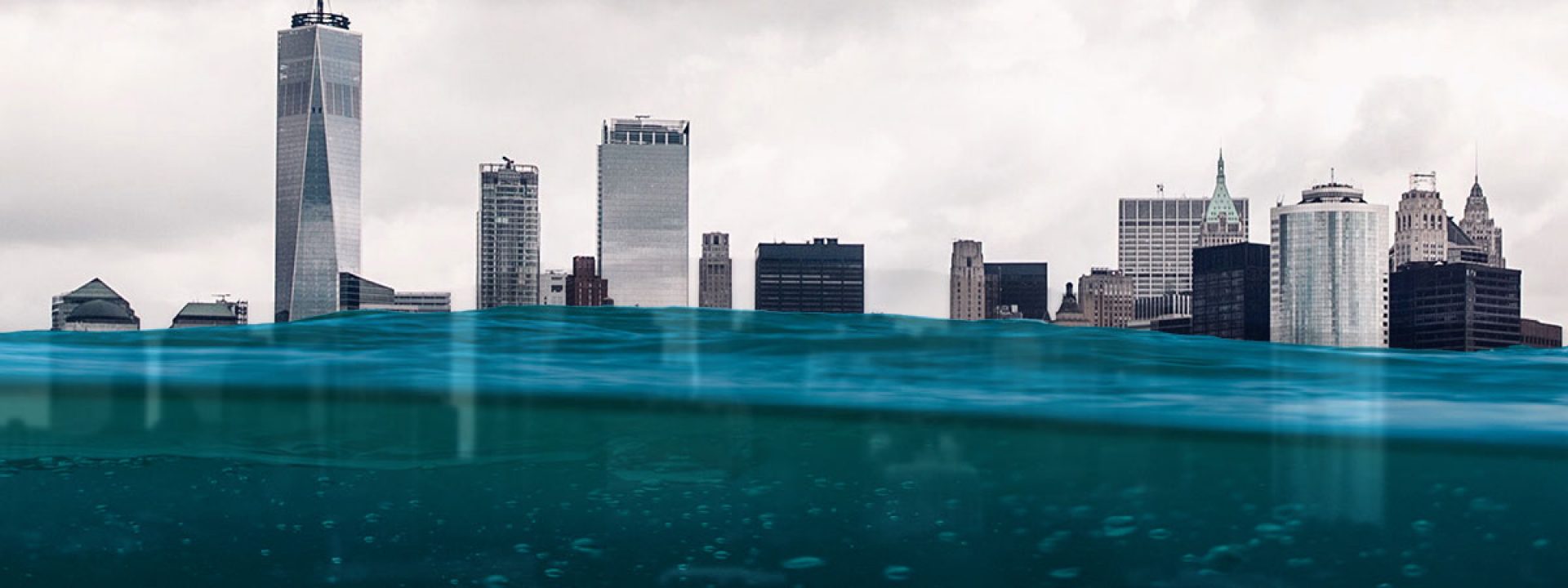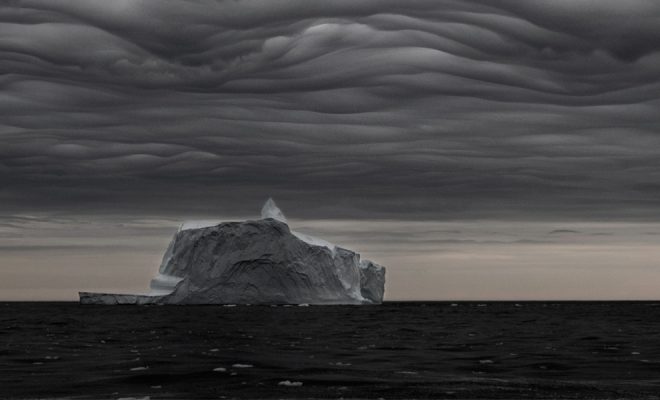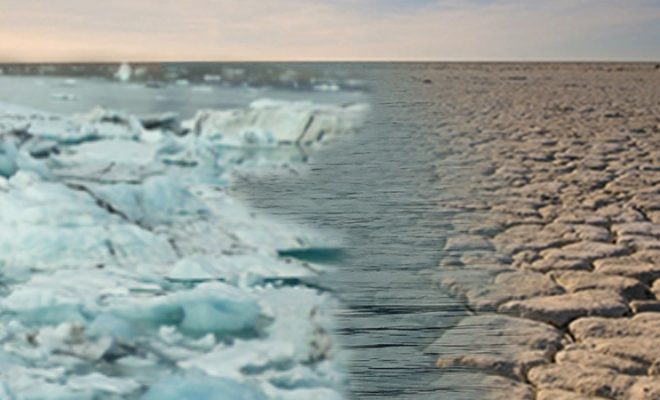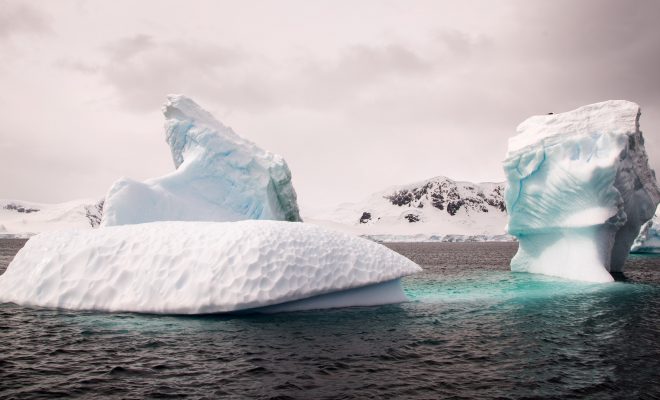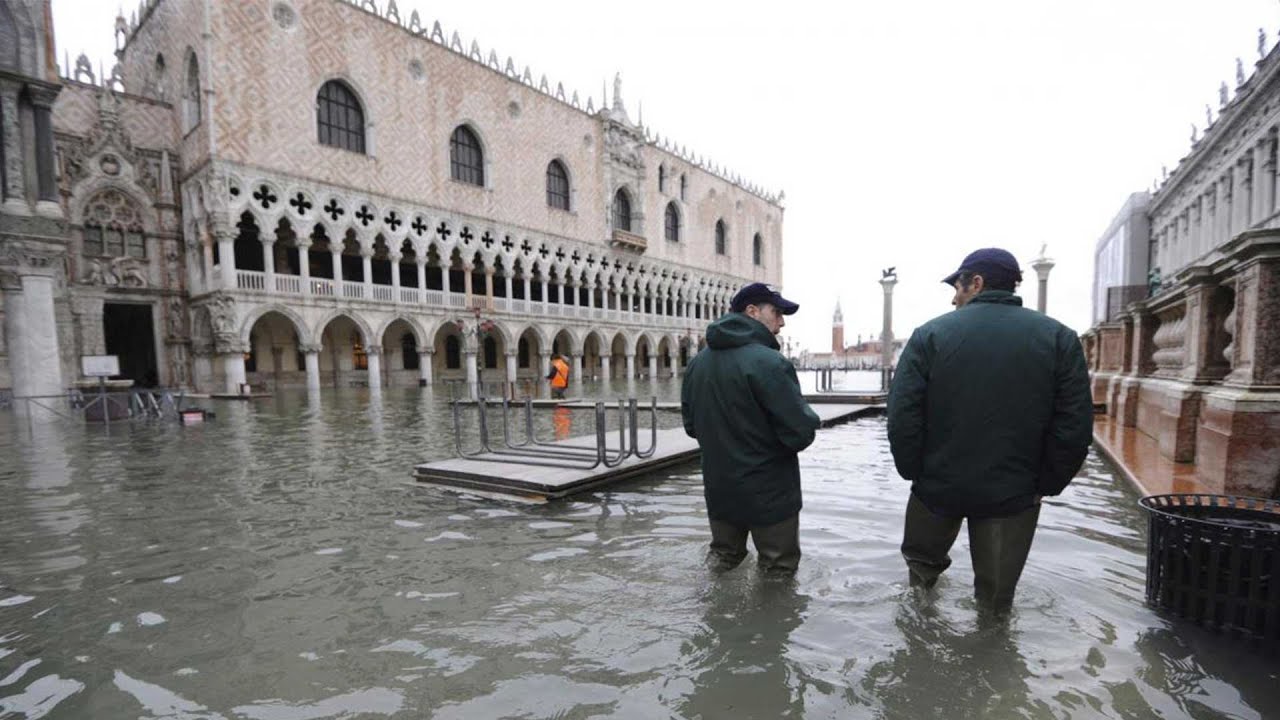
Climate change is making us experience alterations in our environment that have been unimaginable for as long as we have had historical records. The rising sea level is one of them, and it can be verified, so it does not admit any denialism. Neither does catastrophism; it is a challenge we must face with mitigation and adaptation.
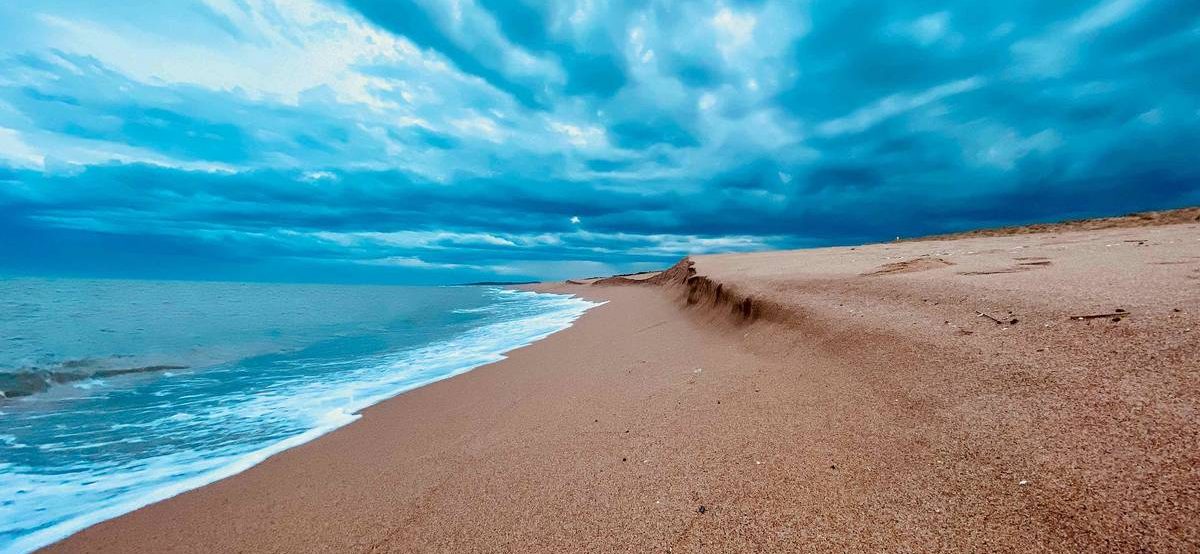
Sea level rise is an irreversible fact. © Ms. Leonor Hernandez/WMO
23 centimeters (9.06 inches) since 1880
The latest World Meteorological Organization (WMO) and IPCC reports corroborate what the scientific community has warned against since the last century: sea levels are continuing to rise. In 2021, the U.S. Global Change Research Program (USGCRP) confirmed that, in the previous decade, the rise had reached 4.5 centimeters (1.77 inches). The most significant concern is its accelerated rise: between 2013 and 2021, the increase more than doubled the rise between 1993 and 2002.
This year, new studies provide more data in this regard. In February, the U.S. National Oceanic and Atmospheric Administration (NOAA) published the results of a study showing that the rate of sea level rise is increasing, and it is expected that, in the United States, the level will rise about 30 centimeters (11.8 inches) between now and 2050; according to these data, it follows that in the next 30 years the sea level will rise as much as in the last century.
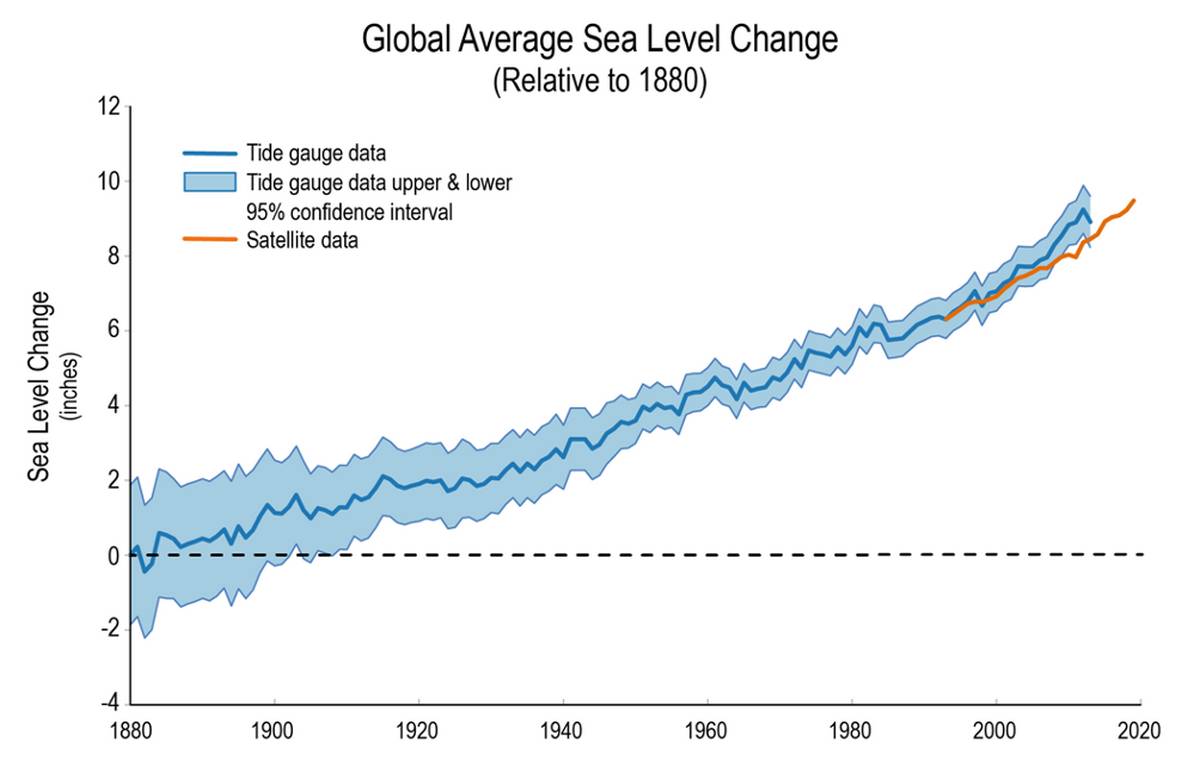
On average, sea levels have risen about 23 centimeters (9.06 inches) since 1880; nearly half of this increase has occurred in the last 25 years. © NOAA National Centers for Environmental Information, U.S. Environmental Protection Agency
The cause is clear: global warming
No one doubts that the rising seas are due to global atmospheric warming. According to the IPCC, the world is now 1.09°C warmer than it was between 1850 and 1900. This has two direct impacts on water: warming seawater and glacial and polar melting.
a) Warming of the seawater expands it
The ocean surface has warmed by about 0.9°C as a global average since 1850. Still, it is an accelerating rate: about two-thirds of the ocean’s temperature increase has occurred over the last 50 years, and since 1970 it has experienced the fastest increase over the previous 2,000 years. And when the water warms, it expands. It is estimated that half of the 20th-century sea level rise is due to the so-called thermal expansion of water.
The second effect of overheated seawater is the melting of the polar ice in contact with it. The most problematic situation is that of the Antarctic ice that is submerged below sea level and for which, so far, little data is available. However, scientists suspect that it has begun to melt.
b) Melting ice due to global warming
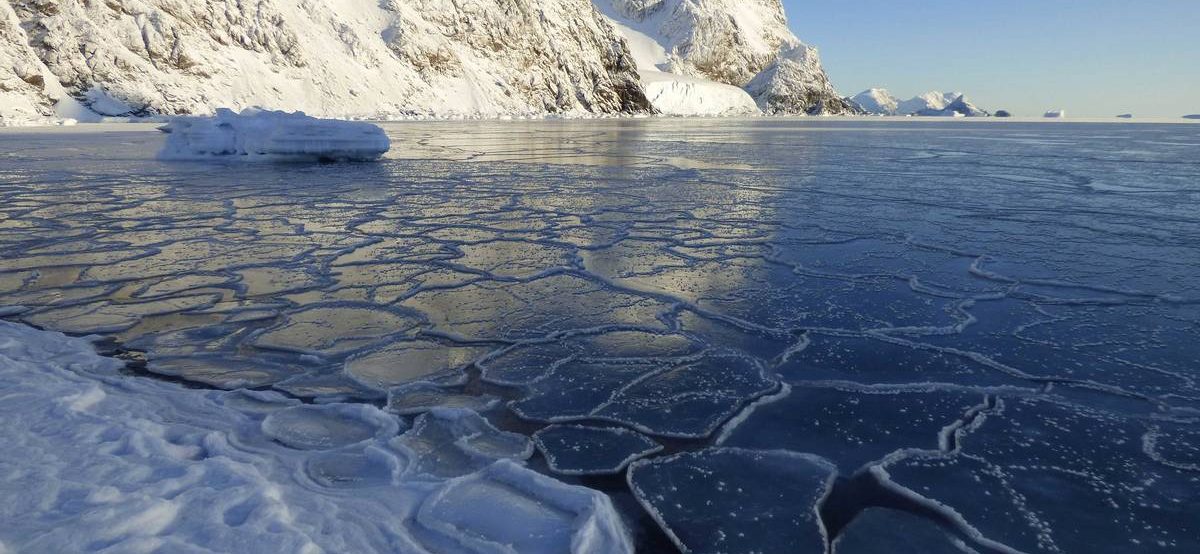
Currently, 60% of the rise in sea level comes from the melting of its surface layer, which loses about 270 gigatons per year that are discharged into the Atlantic Ocean. © Mr. Diego Ferrer/WMO
On the planet, high air temperatures have caused more ice to melt in summer and less water to freeze in winter. The consequence is increased water runoff into the sea, contributing to rising sea levels. On average, the Earth’s glaciers have shrunk by 33.5 meters (1,099 feet) since 1950, and more than three-quarters of this loss has occurred since 1980.
Today, it is estimated that the loss of mass from the glaciers and the surface layers of the North and South Poles discharges some 670 gigatons of water into the sea each year, equivalent to 268 million Olympic-size swimming pools.
The case of Greenland, home to the second largest freshwater reservoir on Earth after Antarctica, is the focus of scientists’ concern. Currently, 60% of the rise in sea level comes from the melting of its surface layer, which loses about 270 gigatons per year that are discharged into the Atlantic Ocean. If all the Greenland ice were to melt, it is estimated that sea levels could rise by six to seven meters. The latest weather news is not very promising: in mid-August 2021, at the Summit Station observatory at an altitude of 3,216 meters, it did not snow but rained for the first time since records have been kept.
On the other hand, the news that the Arctic Ocean is warming more than twice as much as the global average makes international headlines every year. Its ice mass between 2011 and 2020 is the lowest since 1850, and its thickness during the summer is the smallest in the last 1,000 years.
The sea level will continue to rise, but we can slow it down
IPCC reports claim that seawater warming will continue to increase for the rest of this century and will likely continue until at least 2300. A matter of great concern is that it will even do so under low greenhouse gas (GHG) emission scenarios. By 2100, the average sea level rise is projected to be between 0.4 m (1.57 inches) (for the lowest emissions scenario) and 0.8 m (3.15 inches) (for the highest emissions scenario) above the 1995 to 2014 average. Geographers estimate that from 2050 onwards, coastal areas now home to 300 million people are likely to be flooded.
To what extent can we mitigate this? The acceleration of warming depends on the evolution of GHG emissions, but the process is already irreversible on human time scales. However, it is clear that the more we reduce emissions, the less the temperature will rise, and thus the more we will slow down the temperature increase.
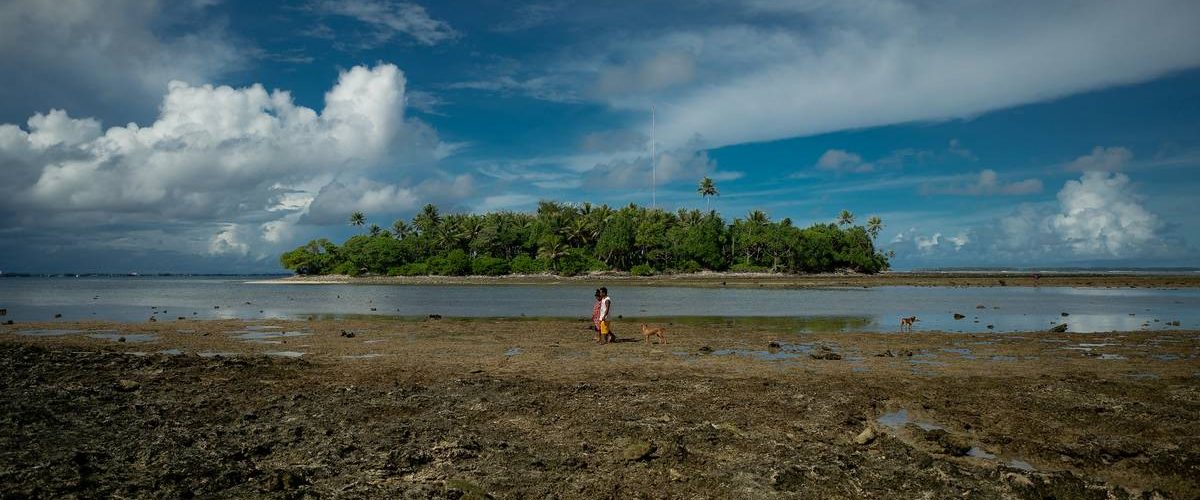
The case of the Marshall Islands is dramatic: rising sea levels force a choice between evacuating the population or raising the land level. © Asian Development Bank
We must avoid the adaptation gap
How to adapt? Who will be most affected? These two urgent questions must be answered now. Sea level rise will cause more flooding in coastal areas and shoreline retreat. The preparedness of these areas, generally the most inhabited on the planet, will determine how resilient they are to the disaster.
Some of the most exposed cities are preparing for such a catastrophic scenario. Singapore, for example, has a $72 billion plan to protect itself from flooding. The case of Jakarta is the most alarming, as the city is also sinking due to overexploitation of aquifers and, at present, about 20% of the urban mass is below sea level, a figure that is expected to reach 40% by 2050. This is one of the reasons why the Indonesian government is considering replacing the capital city of about 10 million people with a new city in Borneo.
Rising sea levels may also worsen the effects of storm surges caused by hurricanes and typhoons, which are on the rise due to climate change. As usual, the least developed regions are the most vulnerable to a humanitarian catastrophe in the event of sea flooding. Coastal urban slums and fishing villages, such as those in many Central American, African and Asian countries, Polynesian islands, and extensive agricultural areas, are at risk. Deltas such as the Ganges (Bangladesh), the Chao Phraya (Thailand), or the Yangtze (China), which are home to cities such as Dhaka, Bangkok, or Shanghai, may cease to feed hundreds of millions of people if their rice paddies are flooded with salt water.
The case of the Marshall Islands is dramatic: rising sea levels force a choice between evacuating the population or raising the land level. This monumental option will require high investments and international technological assistance.
Building dikes, laying new roads, and planting mangroves or other water-absorbing vegetation are options that are already underway in most of these countries. But it is clear that, once again, the technological and financial barrier arises: the rich countries will have more tools to deal with the problem. It is not only urgent that we mitigate, but that adaptation reaches everyone.


